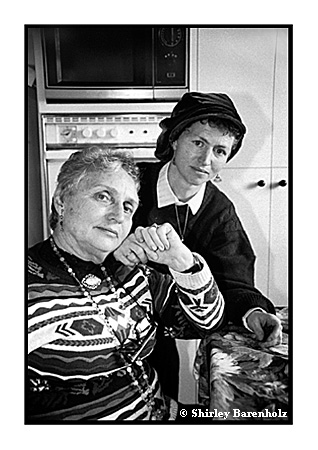Sonni Schey-Birnbaum was born on May 26th 1928 in Berlin into a traditional Jewish family. Her childhood was cruelly interrupted when her father was transported to Poland and she herself, after the ‘Kristallnacht’ in November 1938, was forced to flee to the Netherlands with her younger two brothers and two sisters under her care. Her pregnant mother followed a short time later and, because of contacts in the Netherlands, her father was soon able to join them too. The family was together again.
In 1939 their flight ended in Westerbork refugee camp which, soon after the German invasion, became a notorious transit camp. After many frightening years, in January 1944, the family was transported to the Nazi concentration camp Bergen-Belsen. Already in Westerbork Sonni’s parents took care of the many orphans. And also in Bergen-Belsen they managed the orphanage, to which also the fifteen year old Sonni was fully committed.
In the chaos just before this camp’s liberation, the Germans hastily evacuated three trains filled with starved and sick Jews to an unknown destination. The Birnbaums, together with 2500 other Jews, wandered through the collapsing Third Reich for thirteen days. This train with human cargo, later called ‘The Lost Transport’*, met its Russian liberators in Tröbitz. In the West they knew nothing about this transport, and it took months before repatriation began. In August 1945 Sonni and her family returned to the Netherlands. The Birnbaum family survived the terrible nightmare, but grandparents, aunts and uncles and cousins had disappeared into thin air. A year later Sonni and her family left for Palestine to start a new life. Sonni now lives in Ramat-Gan with her husband Joshua. They have three children and sixteen grandchildren.
Tamar Haimov-Schey was born in Jerusalem on 28 December 1955. She was Sonni Schey-Birnbaum’s second child. When she was eight she and her parents an brother moved to Ramat-Gan, a suburb of Tel Aviv, were her sister was born two years later.
Her religious background gave her the right to refuse military service, but she nevertheless enlisted in the Israeli army after high school for two years. During this period she fell in love with a young religious soldier, Danny, whom she married after completing their military service. They moved into a house in Jerusalem and both began to study so they could become teachers. In 1981 they moved to the North with their two children. After three moves and six more children, they now live in the religious moshav* Qeshet in the Golan Heights. Tamar’s mother travels regularly to the plateau to visit her daughter and grandchildren. The memories of the war are still present, but they seldom dominate now.
[From: ‘Kinderen van de Hoop’/’Children of Hope’, 1998].
Update 2013:
Sonni still lives in Ramat-Gan and is a widow since October 2008. She is still very active and until now blessed with eighteen grandchildren and nineteen great-grandchildren.
Tamar still teaches and lives in moshav Qeshet on the Golan Heights. Until now she is a grandmother of fifteen grandchildren. (See also the documentary ‘open Eye – open I’).
* ‘The Lost Transport’: In the chaos just before the liberation of the concentration
camp Bergen-Belsen, the Germans hastily evacuated three trains filled with starved
and sick Jews to an unknown destination. One of these trains with 2500 Jews
wandered for thirteen through the collapsing Third Reich, before this ‘Lost
Transport’ met its Russian liberators in Tröbitz. In the West they didn’t know about
this transport, and it took months before repatriation began.
[From: ‘Kinderen van de Hoop’/’Children of Hope’, 1998].
* moshav(iem): a kind of village (cooperative settlement) in Israel, where the
inhabitants are mainly working in agriculture or cattle breeding, but – in contrary to
the kibbutz – they do run their own household and own their business. Yet they buy
and sell collectively, and the land, machinery, shops etc. are collective property.
[From: ‘Kinderen van de Hoop’/’Children of Hope’, 1998].
|
